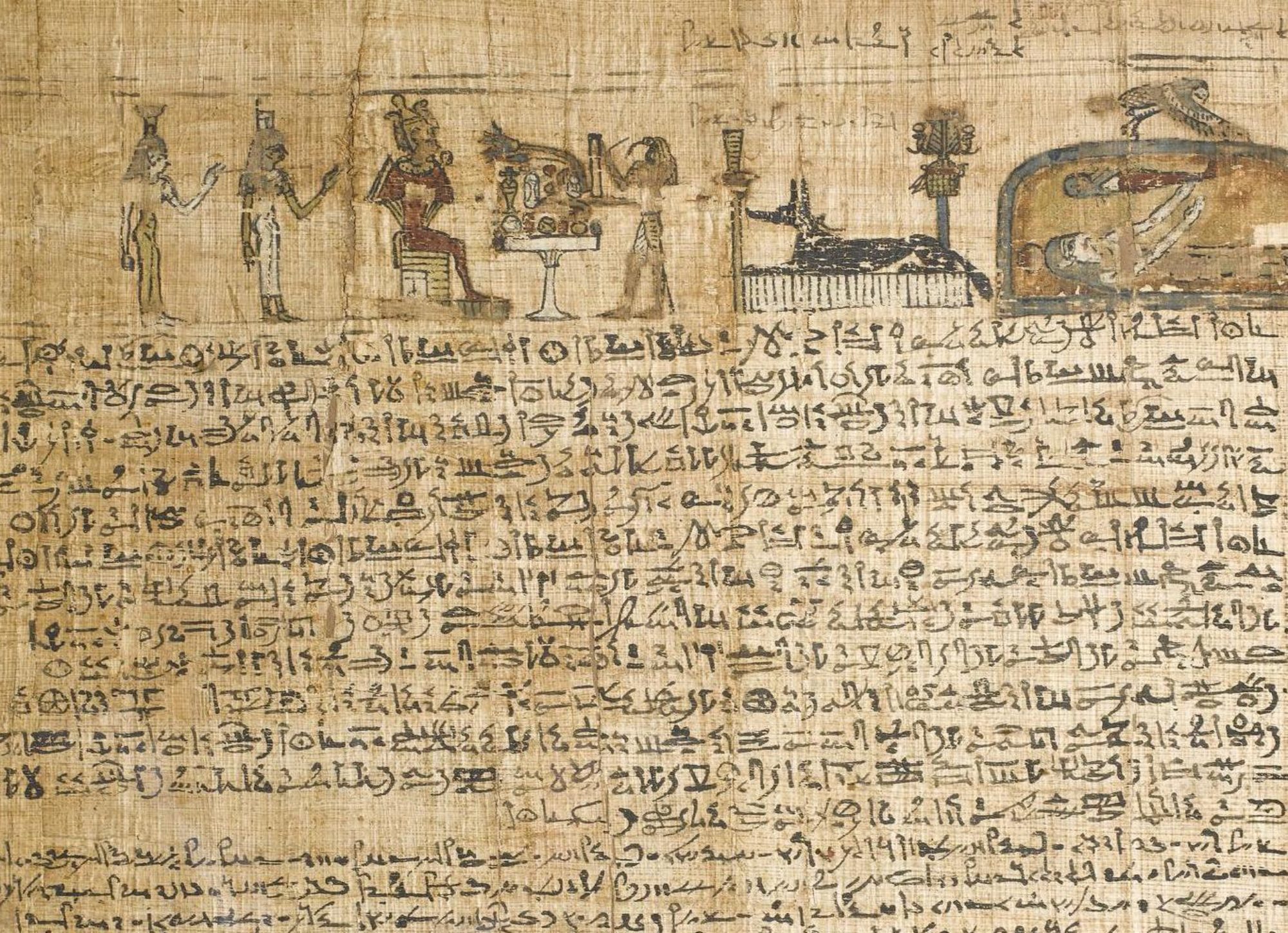The king’s arm is raised in a graceful arc, high in the air, poised in the moment just before it smashes down to brutally shatter his enemy’s skull. In one of the oldest images of an ancient Egyptian ruler, King Narmer’s power and authority is expressed through violent domination. The scene is repeated in the top right using symbols from the natural world: a fierce falcon subduing an enemy on a papyrus plant, an emblem of Egypt.
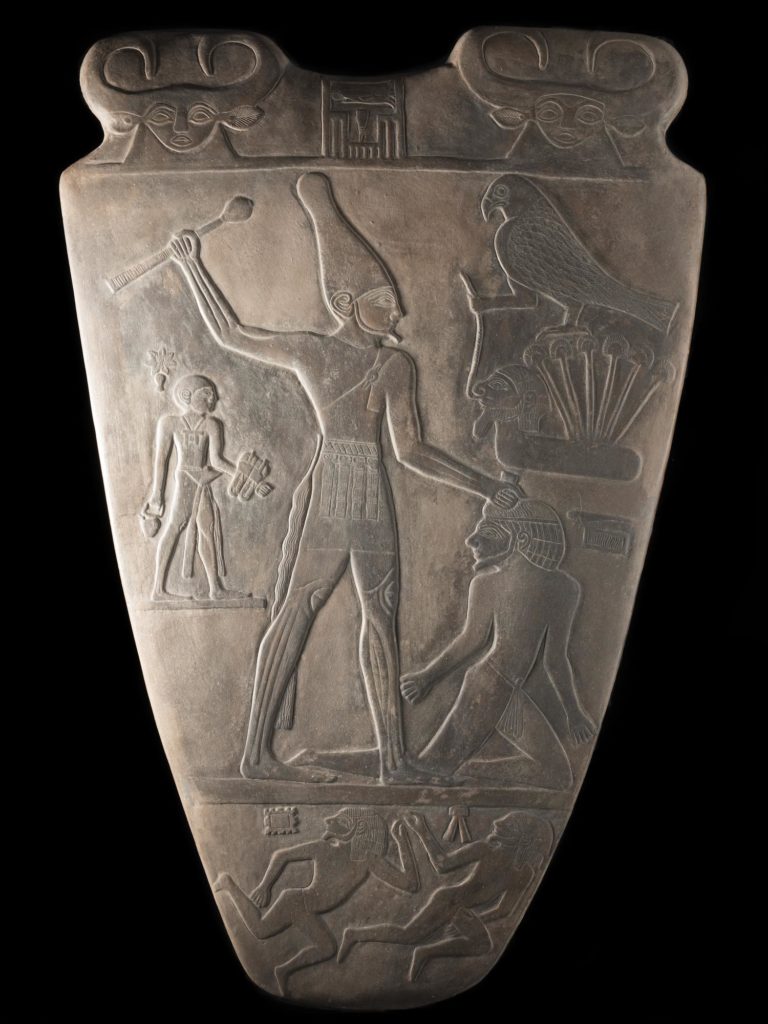
People had lived along the Nile for thousands of years before the rise of the first Egyptian kings, but from this period onwards, their rule was established and maintained often with violence. The natural world was a key element in how these rulers expressed their power. The image of the sphinx was intended to show the king as superhuman, conveying his strength and superiority by depicting him with the body of a lion. The power of the king was also expressed through images and stories of him dominating dangerous animals like lions and hippos. For example, inscribed scarabs distributed to the public by King Amenhotep III describe his unbelievable success in a lion hunt, sometimes recorded as a total of 102 lions killed, other times 110! Unsurprisingly, human and environmental pressures meant that lions and hippos later became extinct in Egypt.
The most powerful state officials followed the king’s example in using the natural world to convey their authority. One of the main scenes in decorated tomb chapels is an image of the official demonstrating their sporting prowess, spearfishing in the marshes and hunting birds with a throwing stick (an Egyptian form of boomerang). They’re often shown spearing multiple fish at once with the greatest of ease. These sporting achievements were intended to convey their mastery of the natural environment. I’ve had the privilege to study these scenes up-close during my fieldwork in Egypt, observing the incredible details that depict the verdant marsh-life in colourful splendour.
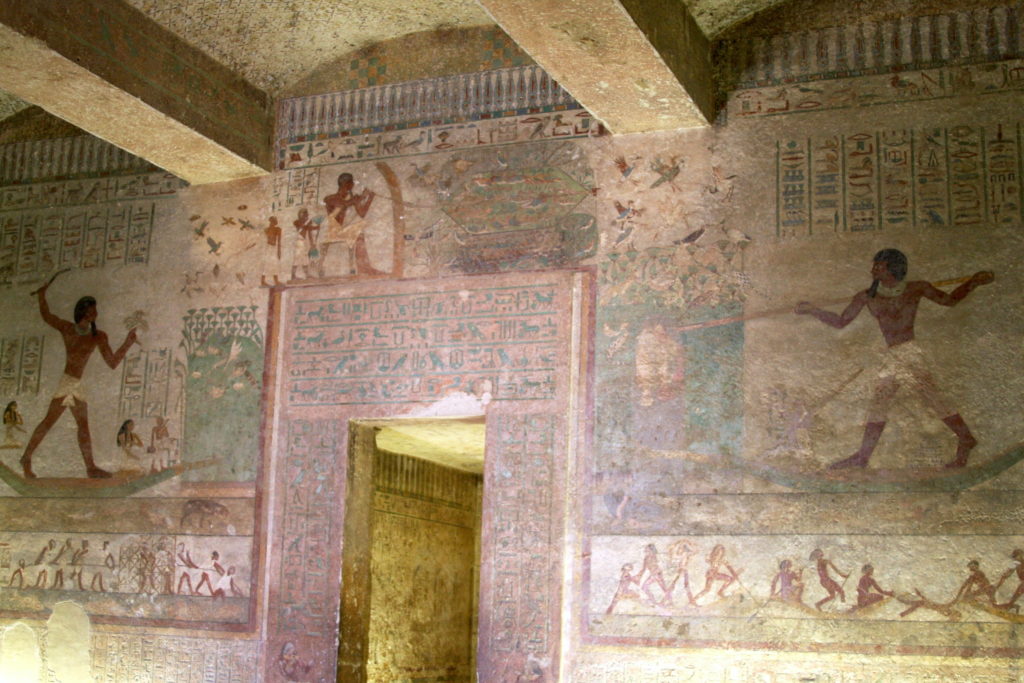
The tomb owner and his family are shown at leisure, taking pleasure in the beauty of a landscape that represents pure enjoyment for them. Making the marshes into a place of aesthetic pleasure, where an elite official could ‘do my heart desires’, was another way of expressing authority and cultural sophistication. The official is shown spearing fish effortlessly, while below, in miniature detail, tiny figures of ordinary fishermen and bird-catchers toil away, hauling their catches in nets, as a group effort, rather than a heroic feat of individual strength. The techniques used by the official – the spear and the throw-stick – served to distance him from his prey and the mess of the kill. Attendants retrieve and clean the carcasses so that the official remains clean and pure, unlike the fishermen who are said to stink.
The exaggerated scale in these scenes shows the official as larger-than-life, an authoritative figure towering over everything else, while the tiny people, animals, and plants become insignificant, simply things for the official to use or enjoy. The fisherman are also often portrayed as weak, lazy, and undisciplined, for example, the boisterous, fighting boatmen in the scene above, or the reclining fisherman, dangling a line in the water while seemingly asleep in the scene below. In contrast to these common stereotypes, the official is poised, controlled, and divinely-favoured. In the inscriptions that accompany these scenes, the ownership of the fishermen’s catch is attributed to the tomb owner with their success being said to be due to the marsh-goddess favouring the official. Sometimes this message is even put into the mouths of the pictured fishermen themselves, for example the caption: ‘look, the goddess Sekhet is good; she has caught a ‘Welcome!’ for this Friend, whom she loves and favors, the Lord Djehutihotep’.
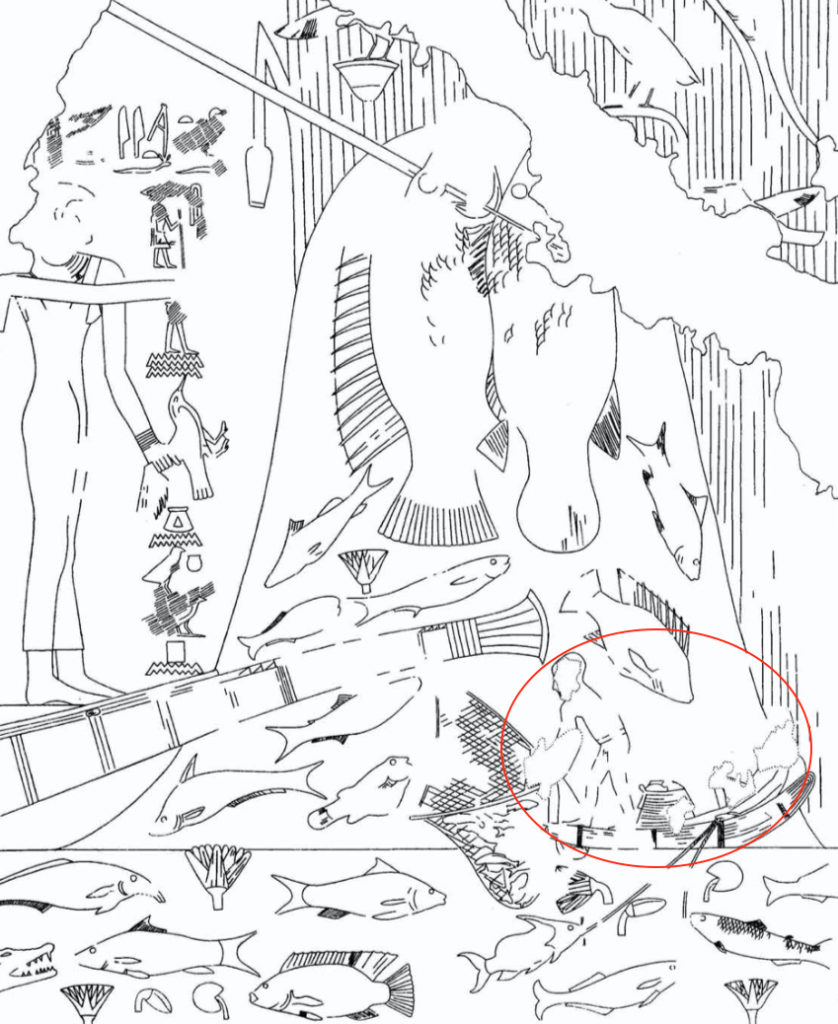
The natural environment of the marshlands contained resources that Egypt’s rulers wanted to exploit. These animals and plants simply existed in the wild, but the fishing and fowling scenes became a way to show that they could be dominated and owned. In reality, since the majority of the work of managing these natural resources was conducted by subordinates on behalf of the official, these scenes of fishing and hunting likely took on added significance as a demonstration of authority, in contrast with the stereotyped depictions of their subordinates. Furthermore, despite the violence on display, the texts that accompany these scenes frame the officials as guardians and stewards. Officials claimed that it was their management of the land that made it productive: ‘every field flourishes, for [we] have nourished the marshes’.
Another common ancient Egyptian image is a scene of numerous servants bringing offerings to the king or official, who receives a vast array of the bounties of nature, from ducks and gazelles to piles of dates and figs. All the natural world is presented to them as their property, no matter how big or small. The poem The Eloquent Peasant states that for a just and caring leader, ‘the fish will come to you already caught, you will catch only fattened fowl’. Inequality is presented as an entirely natural state.
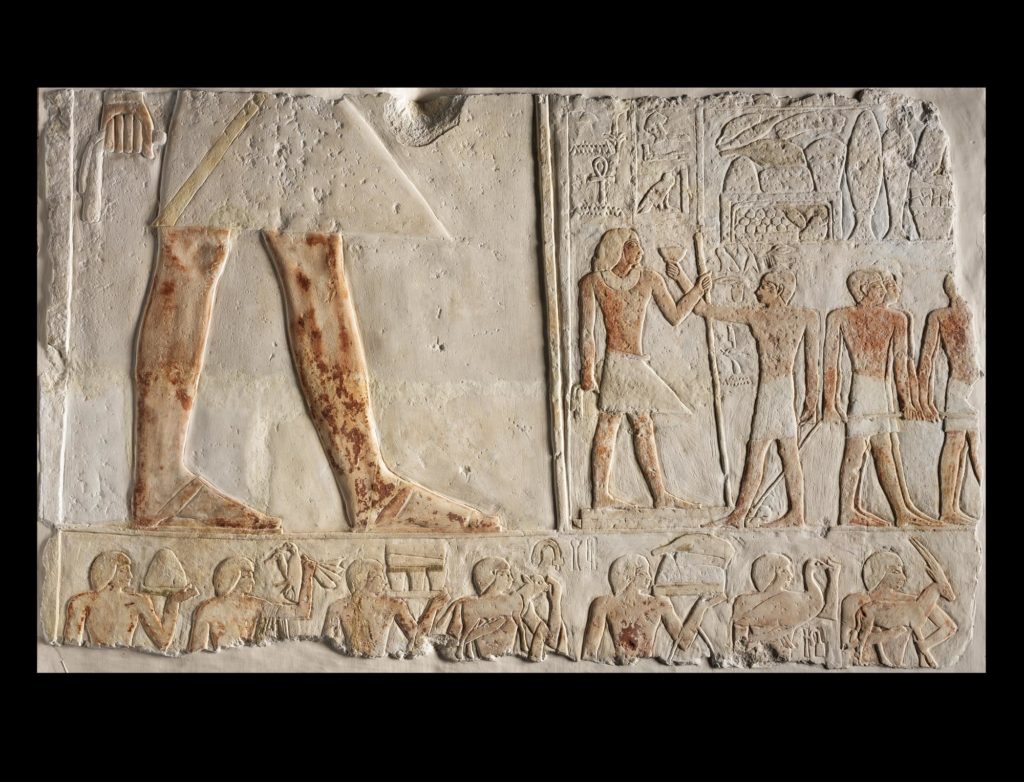
The king and his officials used their ability to dominate the natural world to justify their right to dominate the rest of society. By comparing society to the natural world – a world of predators and prey – social hierarchy was made to seem inevitable. While the king and his officials were portrayed as apex predators, ordinary labourers were mockingly compared to pigs or marsh-birds grubbing in the dirt, stinking ‘more than fish eggs’. Stereotypical images of fishermen, bird-catchers, and herdsmen show them as unruly, aggressive, unkempt, diseased, and emaciated, in contrast to the idealised images of the king and his officials, who are always shown in perfect condition, poised, clean shaven, and beautifully dressed. In this way, the people who actually worked the land and its natural resources were disparaged and discredited from any claims to rights or ownership. Inequality was justified by portraying some people as superhuman and others as less than human.
From ancient times, the willingness to exploit people and animals was built on ideas of innate superiority and inferiority, many of which persist today. We often marvel at Egypt’s pharaohs and their magnificent monuments, but even the ancient Egyptians told stories of the cruelty of King Khufu, who commissioned the building of the Great Pyramid, and his willingness to inflict suffering. And even though ancient Egyptian culture normalised exploitation thousands of years ago, this system was not always sustainable back then either. The yearly life-giving Nile flood brought rich fertile soils that sustained an immense agricultural output, but a poor flood in any given year could result in widespread famine. The first recorded strike in history (c. 1157 BC) occurred after the craftspeople who built the royal tombs were forced to endure long delays in their payment, typically made in food and drink, partially due to environmental factors. The workers downed tools and protested through sit-ins in a royal temple, declaring, ‘We have come here because of our hunger!’. They eventually won their dispute.
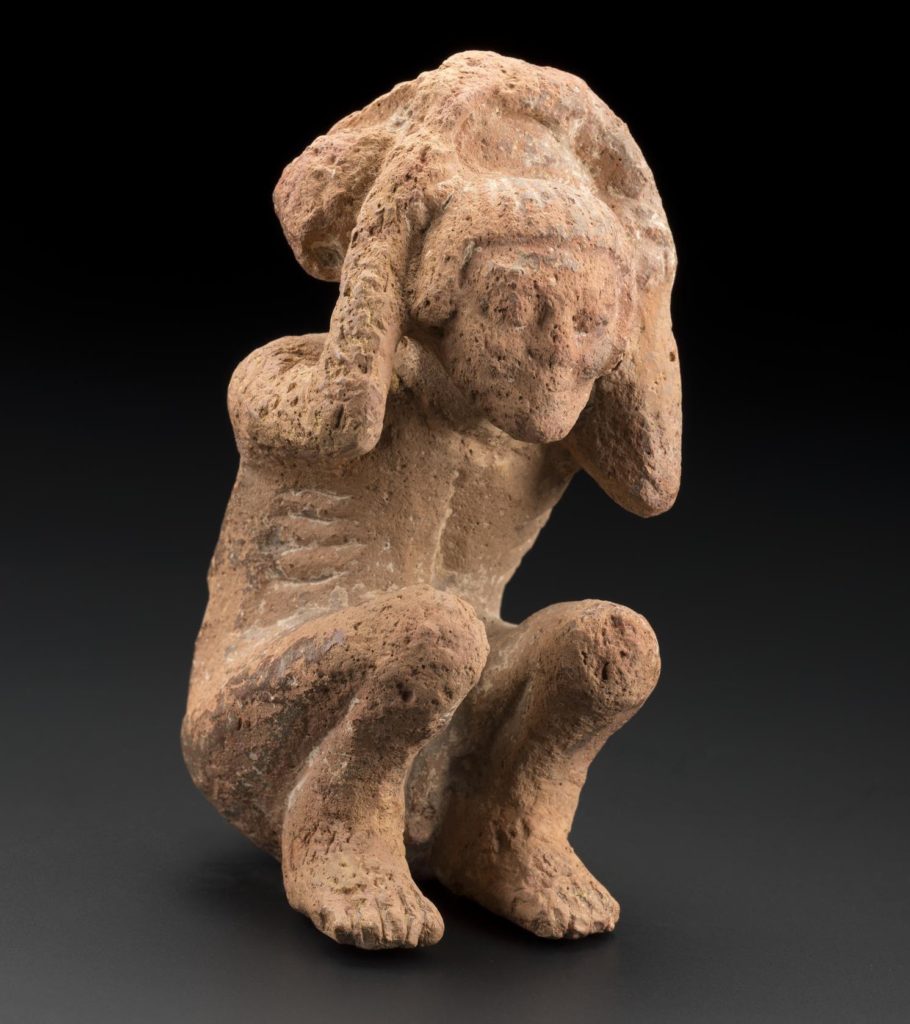
While today we often think of sustainability in environmental terms, achieving a sustainable world involves finding a balance between environmental, economic, and social factors. Industrialisation and its impact have laid bare the deep flaws in a model which has prioritised the economic gains of a few over the lives of workers and other living things on our shared planet. The strains put on the world by climate change and other environmental issues are causing suffering on a massive scale and destroying social cohesion.
In ancient Egypt, there was an awareness of the delicate balance in the world. Over three thousand years-old, the poem the Dialogue of Ipuwer and the Lord of All warns of a world in chaos, beset by environmental, economic, and social disasters: ‘O, but the Nileflood is rising, but no one has prepared for it. Every man is saying, “We do not know what has happened throughout the land.”… O, but laughter is dead, there is only mourning throughout the land.…People cannot find seeds, plants, or birds, and feed is taken from the pig’s mouth. No one can be benevolent when they are bent double with hunger.’ The poem highlights our dependence on the environment and the devastating impact that natural disasters can have on us all. The poem urges, ‘Indeed it is good…when the need of every man is fulfilled’. A more sustainable and more equitable world is one that can meet the needs of everyone, including the natural world. Can we hope to learn lessons from the past to build a better future: one that creates a balance amongst all living things?
A version of this article was originally published in National Museums Scotland’s Explorer magazine. My article ‘Fishing and Fowling for Pleasure versus Produce: Ancient Egyptian Representations of Social Status in relation to Animals and the Natural Environment’ was published earlier this year in the book His Good Name: Essays on Identity and Self-Presentation in Ancient Egypt in Honor of Ronald J. Leprohon edited by Christina Geisen et al.
